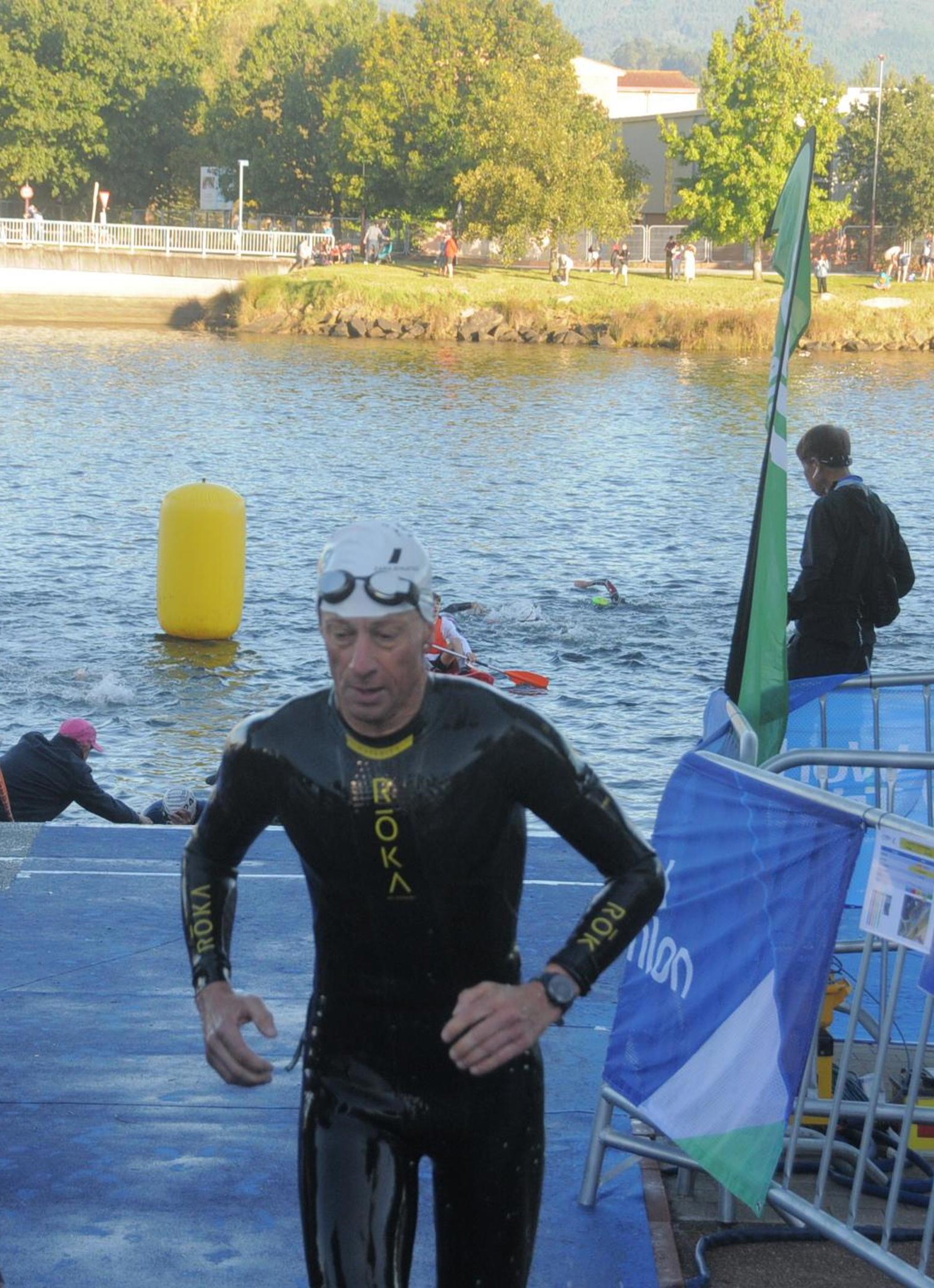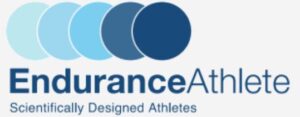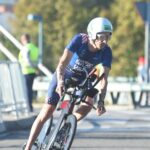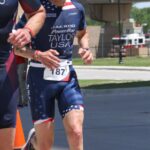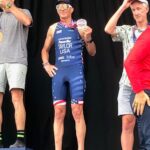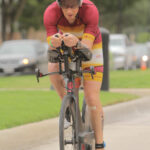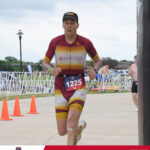Following the World Championships in late September, which concluded my 2023 triathlon campaign, I gave my coach, Dr. Greg Rhodes, a break and only did workouts that I enjoyed for about six weeks. The  highlight of that “down” period was my epic (at least by my standards) Sunday rides on my road bike on the challenging roads of Marin County. During that time, I rode long (again, by my short-course standards, up to 60 miles) with an emphasis on climbing (3000’ to 5000’ per ride) which, in the past, I never enjoyed, but now seek out as much vertical as I can when I ride outside.
highlight of that “down” period was my epic (at least by my standards) Sunday rides on my road bike on the challenging roads of Marin County. During that time, I rode long (again, by my short-course standards, up to 60 miles) with an emphasis on climbing (3000’ to 5000’ per ride) which, in the past, I never enjoyed, but now seek out as much vertical as I can when I ride outside.
As of November 1st, I have re-engaged with Greg and have officially begun my 2024 triathlon season “prep period” (I don’t call it the off-season because the only thing off about it is the absence of races). Since then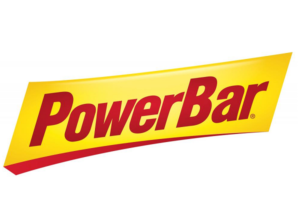 , I’ve been back on a structured training program of 10-12 hours per week of swimming, biking, running, and strength work.
, I’ve been back on a structured training program of 10-12 hours per week of swimming, biking, running, and strength work.
Despite an extremely gratifying 2023 triathlon season that included my first national championship and my second and third world championship medals, I still have some glaring weaknesses that have prevented me from being truly competitive in Olympic-distance races at the national level and climbing higher on the podium internationally. Those weaknesses are my swimming and biking. Thankfully, I’m a fast 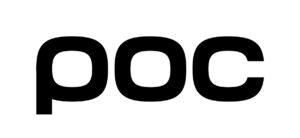 runner for my age and it has been the final leg of triathlon that has enabled me to achieve the results I have. At the same time, I was always playing catch-up out of the water and off the bike, and as always happens with runners in a triathlon, I would run out of real estate at the end. Being the competitive guy that I am, I’m constantly looking for ways get faster and to be even more competitive against my peers.
runner for my age and it has been the final leg of triathlon that has enabled me to achieve the results I have. At the same time, I was always playing catch-up out of the water and off the bike, and as always happens with runners in a triathlon, I would run out of real estate at the end. Being the competitive guy that I am, I’m constantly looking for ways get faster and to be even more competitive against my peers.
After Greg and I dissected my 2023 season, we decided to go all in on seeing if I could turn my liabilities into strengths (or at least minimize them as much as possible). To that end, Greg devised a very different training plan from last year while leveraging two new pieces of technology to help me overcome my greatest limiter, namely, swimming.
training plan from last year while leveraging two new pieces of technology to help me overcome my greatest limiter, namely, swimming.
I didn’t grow up swimming. I was firmly entrenched in the non-drowning category until I reached adulthood. As a result, I suffered from what Lionel Sanders calls “adult-onset swimming.” I was in my early forties before I ever breathed to the side or swam a lap. And it showed. Despite my best efforts, I have been stuck at 1:40/100y at the Olympic distance since I returned to triathlon in 2019 after an 11 year hiatus to focus on my career and raise my children.
side or swam a lap. And it showed. Despite my best efforts, I have been stuck at 1:40/100y at the Olympic distance since I returned to triathlon in 2019 after an 11 year hiatus to focus on my career and raise my children.
 There is simply no way to get the feel for the water that comes from growing up as a swimmer. But I thought that I could improve technically. Two challenges here. First, it’s difficult to identify what the precise technical obstacles are with slow swimming, even if you are working with a swim coach (which I was; Brenton Ford of Effortless Swimming). Second, it’s even more difficult to take that information and know whether you’re actually doing it properly (which I didn’t
There is simply no way to get the feel for the water that comes from growing up as a swimmer. But I thought that I could improve technically. Two challenges here. First, it’s difficult to identify what the precise technical obstacles are with slow swimming, even if you are working with a swim coach (which I was; Brenton Ford of Effortless Swimming). Second, it’s even more difficult to take that information and know whether you’re actually doing it properly (which I didn’t because I didn’t have someone pool side giving me that essential feedback).
because I didn’t have someone pool side giving me that essential feedback).
That’s where the technology comes in.
FORM Smart Swim Goggles
I’ve been using FORM smart swim goggles since 2021 and they have been an absolute game changer for me. They have a heads-up display that shows every useful bit of swimming data including distance, time, 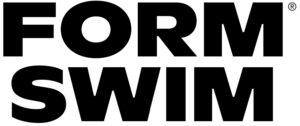 pace, strokes per minute, and much more. Plus, earlier this year, FORM made it possible to upload swim workouts from TrainingPeaks directly to the goggles, thus eliminating the need to print them out, put them in a baggie (which always leaked), and look at the workout constantly during a swim. I also didn’t have to keep track of where I was in my workouts because the FORM goggles showed me what I needed to do. This hands-on data enabled me to focus more on my swimming and have precise metrics about my swims right after. I also find them to be very motivating and just plain fun.
pace, strokes per minute, and much more. Plus, earlier this year, FORM made it possible to upload swim workouts from TrainingPeaks directly to the goggles, thus eliminating the need to print them out, put them in a baggie (which always leaked), and look at the workout constantly during a swim. I also didn’t have to keep track of where I was in my workouts because the FORM goggles showed me what I needed to do. This hands-on data enabled me to focus more on my swimming and have precise metrics about my swims right after. I also find them to be very motivating and just plain fun.
A recent addition to the FORM platform is what they call Head Coach. FORM’s technology now offers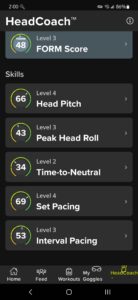 metrics that evaluate three key contributors to effective swimming: head pitch, head roll, and time to neutral. The FORM app scores your swim in these three areas and allows you to chart your progress over time. Even more valuable, the FORM goggles provides real-time feedback in the heads-up display on whether you’re optimizing your swim in these three areas, so you can make the necessary adjustments as you swim.
metrics that evaluate three key contributors to effective swimming: head pitch, head roll, and time to neutral. The FORM app scores your swim in these three areas and allows you to chart your progress over time. Even more valuable, the FORM goggles provides real-time feedback in the heads-up display on whether you’re optimizing your swim in these three areas, so you can make the necessary adjustments as you swim.
As you can imagine, my #s for the three technical areas were darned low (head looking down too much, head turning too far out of the water with each breath, slow time to neutral; see image to the right). But over the last several weeks that I have been using Head Coach during my swim workouts, I have seen a steady improvement in these metrics and, amazingly, faster times in my speed work.
eoSwimBETTER Analytics
I recently discovered eoSwimBETTER technology, another game changer for me that is also  helping to drag swimming into the 21st century. eoSwimBETTER uses “force sensors” that strap onto the palms of each hand to measure five important areas related to swimming propulsion: stroke rate & force, force field, stroke path & hand velocity, consistency, stroke phase, and force vs. time (I realize these metrics sound pretty scientific, but they aren’t that complicated and have immense practical, real-world value).
helping to drag swimming into the 21st century. eoSwimBETTER uses “force sensors” that strap onto the palms of each hand to measure five important areas related to swimming propulsion: stroke rate & force, force field, stroke path & hand velocity, consistency, stroke phase, and force vs. time (I realize these metrics sound pretty scientific, but they aren’t that complicated and have immense practical, real-world value).
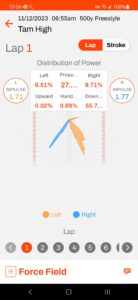 My first use of the eoSwimBETTER handsets finally showed me why I was so slow. My propulsive forces were low (see Propulsive in the image to the left) and my Downward forces were high (see Down in the image to the right). According to eoSwimBETTER ’s CEO, Jaimie Fuller, Propulsive should be around 75% and Downward should be below 20%. Yikes, I have a long way to go!
My first use of the eoSwimBETTER handsets finally showed me why I was so slow. My propulsive forces were low (see Propulsive in the image to the left) and my Downward forces were high (see Down in the image to the right). According to eoSwimBETTER ’s CEO, Jaimie Fuller, Propulsive should be around 75% and Downward should be below 20%. Yikes, I have a long way to go!
What these metrics showed me was that I was pushing down instead of back during the pull phase of my stroke. So, I need to focus on a high elbow and a more horizontal pull. I’ve set aside my speedwork in the pool for the next month and am totally focused on making this key technical change (and a few other minor changes) to my stroke.
I’ve been using the eoSwimBETTER handsets for only a week and I have found the metrics incredibly helpful. By knowing exactly what I’m doing wrong, I can focus on what precisely I need to do to correct my technical liabilities. I can see clear data of how technical changes translate into propulsion and, ultimately, speed. I can also track my progress over time. With that specific focus, I’ve already seen improvement in my propulsive data.
I’ll explore the psychological benefits of my approach to overcoming my weaknesses and using the latest technology to help me in a future article, but I will say now that, by leveraging the metrics from my FORM swim goggles and my eoSwimBETTER handsets, I’m more motivated, confident, and excited about my swimming than ever before.
In my next installment of my I Practice What I Preach series, I will explore what I’m doing with my cycling to close the gap between myself and the really fast cyclists in my age group.

